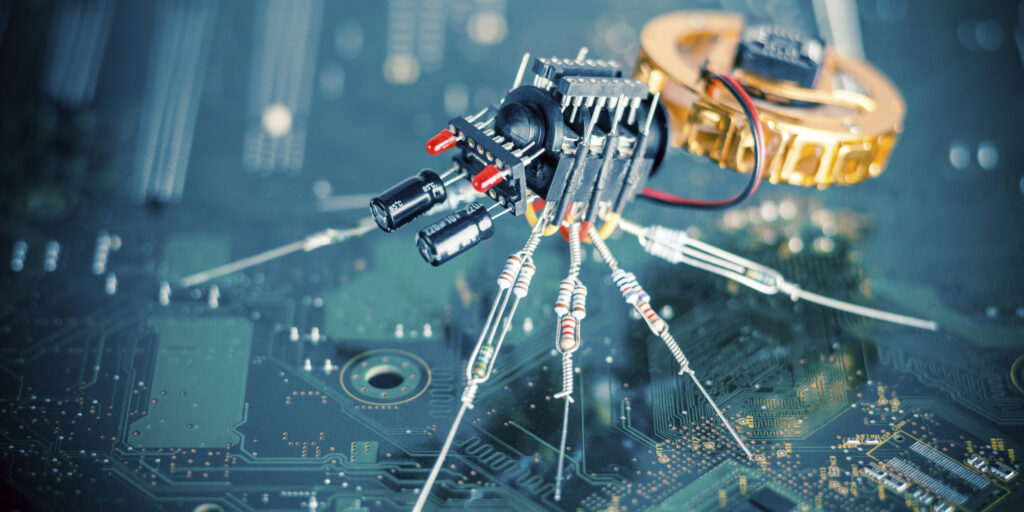
In the ever-evolving landscape of scientific discovery, few fields have captured the imagination quite like nanotechnology. It’s a realm where the tiniest of particles lead to groundbreaking innovations and applications that touch every facet of our lives. In this article, we delve into the intricacies of nanotechnology, explore its diverse subtopics, and uncover its revolutionary applications that are reshaping the world.
Understanding Nanotechnology: Unveiling the Minuscule Marvels
At its core, nanotechnology is the manipulation and control of matter on an atomic or molecular scale. It deals with structures and devices that exist at the nanometer scale, which is approximately one billionth of a meter. To put this into perspective, a single strand of human hair is about 80,000 to 100,000 nanometers wide.
Nanotechnology’s significance lies in its ability to engineer and restructure materials at the nanoscale, granting scientists unprecedented control over their properties. This level of precision opens doors to a myriad of applications that were previously unimaginable.
Exploring the Nanoworld: Subtopics of Nanotechnology
- Nanomaterials
Nanomaterials are materials engineered at the nanoscale to possess unique properties. These materials can be metallic, ceramic, polymeric, or composite in nature. They find applications in electronics, medicine, energy storage, and more.
- Nanoelectronics
Nanoelectronics involves the design and creation of electronic components at the nanoscale. This subfield has been instrumental in the development of smaller, more efficient, and powerful electronic devices.
- Nanomedicine
Nanomedicine merges nanotechnology with medicine, paving the way for targeted drug delivery, advanced imaging, and even regenerative medicine. Nanoparticles can be designed to deliver drugs to specific cells, minimizing side effects and enhancing treatment efficacy.
- Nanotechnology in Energy
Nanotechnology has revolutionized the energy sector with innovations like more efficient solar cells, advanced battery technologies, and even energy-harvesting materials.
The Remarkable Applications of Nanotechnology
1. Medicine and Healthcare
Nanotechnology has transformed diagnostics, imaging, and treatment. It enables the development of highly sensitive biosensors, targeted drug delivery systems, and innovative imaging agents for early disease detection.
2. Environmental Remediation
Nanomaterials are being used to purify water, remediate soil contamination, and even capture pollutants from the air, offering sustainable solutions to pressing environmental challenges.
3. Electronics and Computing
The semiconductor industry benefits immensely from nanotechnology. It has led to the production of smaller, faster, and more energy-efficient electronic devices, paving the way for the next generation of computers and communication systems.
4. Energy Generation and Storage
Nanotechnology plays a pivotal role in renewable energy technologies. It has led to advancements in efficient solar panels, lightweight and high-capacity batteries, and even the development of nanogenerators that convert mechanical energy into electricity.
5. Materials Science and Engineering
Nanomaterials exhibit properties that differ from their bulk counterparts. This has led to the creation of lightweight yet incredibly strong materials, self-healing coatings, and advanced composites used in aerospace, construction, and manufacturing.
The Inner Workings of Nanotechnology and Its Benefits Today
Nanotechnology operates at the scale of individual atoms, where the laws of quantum physics dominate. Scientists manipulate and assemble these tiny building blocks to create materials and structures with enhanced properties. The benefits are far-reaching:
- Precision and Efficiency: Nanotechnology allows for the precise control of materials, leading to enhanced performance and efficiency in various applications.
- Targeted Treatments: In medicine, nanoparticles can be engineered to target specific cells, minimizing damage to healthy tissue and maximizing treatment efficacy.
- Sustainability: Many nanomaterials and nanotechnological approaches contribute to sustainable practices, such as cleaner energy production and more efficient resource utilization.
- Miniaturization: Nanotechnology has driven the miniaturization of electronics, making devices smaller, lighter, and more portable.
- Innovation: The unique properties of nanomaterials have sparked innovation across indeustries, leading to novel products and solutions.
Conclusion
In conclusion, nanotechnology opens the door to a world of infinite possibilities, where the manipulation of the minuscule leads to monumental advancements. From life-saving medical breakthroughs to revolutionary energy solutions, the applications of nanotechnology are transforming the way we live, work, and interact with the world around us. As we continue to unravel the mysteries of the nanoworld, the potential for even more astonishing discoveries remains tantalizingly within reach.